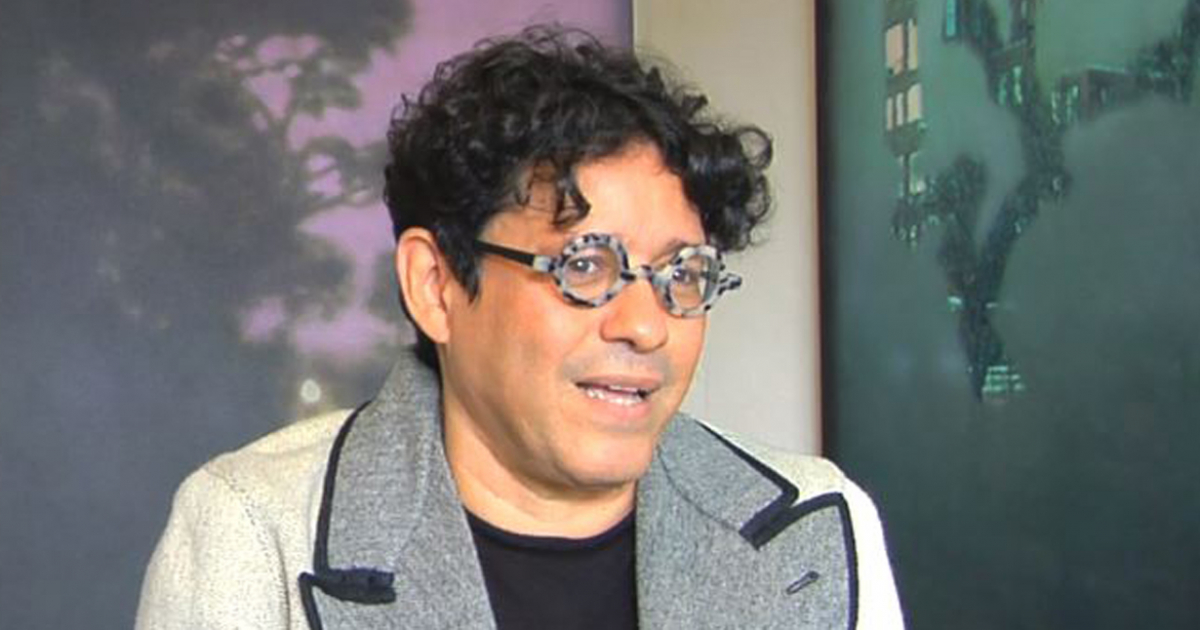
The painter, designer and photographer Arturo Conca, one of the most unique personalities of contemporary Cuban art, died in Miami at the age of 65.
The circumstances of his death, which became known in the late afternoon of this Thursday through friendships of the artist, are still imprecise. The body was taken to the Miami-Dade Forensic Office and the case is under investigation to determine the causes of death.
According to testimonies obtained by CiberCuba Cuenca’s body was found in his apartment in northwest Miami last Monday, after neighbors perceived a rare odor at the site and alerted authorities. The administrator of the building knew that the occupant of the apartment was a Cuban painter and tried to locate a relative of hers through the local art community.
“The manager of the building contacted the Cuban-American photographer María Martínez Cañas and through her mobilized a group of painters who knew Cuenca from Cuba,” he told CiberCuba one of the artists who was located to reach out to a sister of the victim. “Everything developed very quickly and there was great cooperation between many friends and people to find their relatives.”
It is estimated that the artist’s death occurred after August 8 and that at least six days elapsed before the body was found.
“Arturo Conca, Saltimbanqui of the play that mommy adored, my Japanese theater teacher, my hairdresser my private designer and this man who aesthetically showed me a way where art and costumes become shields. Goodbye, saltimbanqui dear! This is the end of an era, “wrote writer Wendy Guerra, a close friend of the painter.
The news of his death prompted a wave of reactions on social media by friends and admirers of his art from the years in Cuba.
“Have a good trip Arturo Conca (…) My generation will not be able to forget you. You were always a total artist a different man. You were so much that the circle closes early. I see those today shocked and I they make you laugh. You created everything from the soul and you made science: ideology. Light for you, brother, “said director Juan Pin Vilar from Havana.
With the death of Cuenca disappears an essential figure of the artistic movement that was generated in Cuba in the 80s, and a creator who marked his work with a sign of originality and permanent experimentation in the expressive forms to capture the images. of his time, from a base of photographic documentation.
He was also a controversial thinker, a transgressor who reflected passionately on the links between art and ideology, also reflected in many of his pieces, and a man with special talent for costume designs, decoration, craft skills. , hairdressing and cooking.
His creations had a strong conceptual load. Cuenca called his style com palimpsest, because he configured the images from superimposed planes, trying to bring to the web the dynamism of reality and the ideas that define it.
Born in Holguin on September 20, 1955, Cuenca studied painting at the National Academy of Fine Arts in San Alejandro, Havana and literature at the National School of Art Instructors.
His career began to gain attention in Cuba when he was awarded the National Landscape Prize, in 1982, and then as a Prize at the Painting Salon of the Union of Writers and Artists of Cuba (UNEAC), in 1985.
From that moment his pieces occupied space in numerous national and international collective exhibitions. He also won prizes at the 1987 Engraving Meeting and at the City Hall of Havana in 1988, and successfully exhibited at the Musée d’Art Moderne in Paris, and at the Center Cultural de Bechem, Belgium.
Protagonist of the intellectual and artistic generation of the 80s, which sought a critical impact on the reality of the country, Cuenca began to move from its self-proclaimed Marxist positions to the frontal challenge with the cultural and political authorities of the country.
His confrontation with the then powerful ideological leader of the PCC Carlos Aldana was sounded in February 1988, in a meeting of young artists with the assistance of Fidel Castro. Cuenca got up from his seat and shouted at Aldana to withdraw his questions about the role of artists and intellectuals in Cuban society.
His stay on the island was numbered. In 1989 he left for Mexico and there, in collaboration with Nina Menocal, founded the NinArt Cultural Center, a non-governmental organization dedicated to promoting the works of Cuban artists abroad.
In 1991 he settled in New York City, where he lived and developed an important pictorial work for almost 20 years.
He later moved to Miami and acquired an apartment in an area northwest of the city that is now undergoing extensive urban development.
He received the Cintes Foundation Award in 1992, consisting of a creative scholarship.
His photographic series entitled “Homeless: Subjective and Objective Images” was highly praised in those days., for his keen sensitivity in capturing the urban environment of New York.
“Conca uses the critical awareness of conceptual art to dismantle simplistic versions of the world. But it also goes beyond the didactic limitation of much of conceptual art by offering the viewer a rich visual experience. “His compressed narratives elegantly reinvent the history of painting, photography and cinema; Cuenca has rejected nothing but the easy solution,” wrote critic Raphael Rubinstein.
His visual experiments in recent years have decisively incorporated working with the computer.
His works are in the permanent collections of some twenty museums and top institutions in the United States, Europe and Latin America. In Havana, the National Museum of Fine Arts and the Photo Library of Cuba preserve valuable creations from its first stage.
He is survived by two sisters, one living in Miami and another living in Spain. No information about his funeral has been released so far.